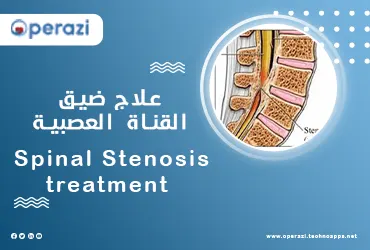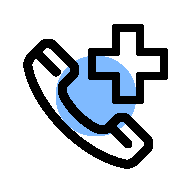Spinal Stenosis treatment
The Spinal Stenosis treatment that results from spinal stenosis, which is often the final stage of the degenerative process of the spine, and which is characterized by leg pain with walking, is treated. Occasionally, symptoms of spinal stenosis appear acutely, but most often they generally develop over several years. A person who stands for long periods or walks will increase leg pain. Leaning forward or sitting will relieve the pain because these positions help open the spinal canal, but symptoms recur if you stand up straight again. Numbness and tingling can also affect you while weakness is less common, and operazi offers an installment service for patients.
What is spinal stenosis?
The lumbar spine (lower back) and cervical spine (neck) consist of multiple bones separated by cushions (discs) and connected to each other by small joints.
As we age, the potential for degenerative changes that can eventually cause symptoms increases. Spinal stenosis refers to the narrowing of the channel where nerves travel to reach their final destination (the arms or legs).
Our spinal canal is bordered by three important anatomical structures: discs, joints (facets), and ligaments. Over time, discs dry out, lose height and can bulge, which can lead to encroachment on the front of the canal.
At the same time, the small joints of the face will begin to degenerate and form bony protrusions that can narrow the canal from both sides. Finally, the ligamentum flava that borders the posterior part of the duct can swell and contribute to the general narrowing of the duct.
The overall degenerative process that contributes to spinal stenosis is slow and can take many years to cause enough stenosis to produce symptoms.
Symptoms of Spinal Stenosis
Before learning about the Spinal Stenosis treatment, familiarize yourself with the symptoms. Typical patient complaints include loss of stamina and fatigue related to their lower extremities.
● Back pain is often associated with leg symptoms but is quickly relieved when the patient is seated.
● Common symptoms identifying stenosis are decreased ability to walk distances, preference for flexed positions (sitting and sleeping in the fetal position) or bending over a shopping cart.
● The body prefers a bent spine position because the channel is in its widest dimensions with curvature rather than standing upright.
See also: Crystal Facial
Diagnosis of Spinal Stenosis
How to identify and treat Spinal Stenosis Tests to confirm the diagnosis of spinal stenosis include an MRI or CT scan with a myelogram. These tests will confirm suspected narrowing and pressure in the nerve(s).
Because spinal stenosis at one or two levels of the spine can affect a single nerve outside, a combination of imaging and a physical examination by a spin doctor can confirm the diagnosis.
What is the Spinal Stenosis treatment?
First: Non-surgical Spinal Stenosis treatment
● Non-surgical treatment refers to attempts to reduce stenosis symptoms without the use of surgery.
● Physiotherapy is the mainstay because increasing the strength and endurance of the muscles of the trunk and neck increases the support of the bony structure of the spine and reduces the irritation of the deteriorating anatomical parts.
● Non-steroidal anti-inflammatory drugs (NSAIDS) relieve pain by reducing irritation but do not alter the course of the disease process.
● Finally, an epidural steroid injection can reduce swelling and irritation of compressed nerves to relieve pain.
● Conservative measures work well because significant relief can often be obtained as these non-surgical measures buy time by reducing symptoms without changing the underlying problem of the aging spine.
Second: Surgical Spinal Stenosis treatment
● The key to deciding whether or not to have surgery is the degree of pain or disability caused by spinal stenosis.
● When you can't walk as much as you once enjoyed or take care of yourself as you once did, it may be time to think about what surgery can do for you.
● After at least 6-12 weeks of conservative procedures, if no significant improvement is obtained, surgery may be discussed.
● The laminectomy procedure involves "decompressing the compressed nerves" by removing the bony back portion (lamina) of the narrowed canal.
● A laminectomy can take 1 to 3 hours depending on the number of levels of the spine involved.
● There are minimal restrictions after surgery and the majority of patients go home the next day without restrictions.
● A hypotensive laminectomy quickly relieves leg symptoms.
● In some cases, the stenosis is associated with spondylolisthesis or spondylolisthesis. This 'slip' can become worse after a laminectomy at the same level.
● In such cases, spinal fusion is added during the same operation to reduce potential back pain caused by spinal instability.
● The risks associated with decompression surgery are similar to most surgical procedures. The greatest risk is associated with anesthesia.
● To reduce this risk, patients undergo medical clearance by their primary care physician or cardiologist before undergoing surgery.
● Other risks include infection, rupture of the dura (a nerve sac that causes cerebrospinal fluid to leak, and which is repaired during surgery) and development of stenosis at other levels.
See also: Surgery for cardiac congenital anomalies
What are the other types of surgical Spinal Stenosis treatment?
Surgical treatments can be used to eliminate the condition, making it an effective treatment for Spinal tightness. They include:
1- Laminotomy
This involves removing only part of the lamina. The procedure is done by carving a hole large enough to relieve pressure in the affected area.
2- Laminoplasty:
This procedure is recommended for cervical spinal stenosis, as it is performed on the vertebrae of the neck (cervical spine). Laminoplasty involves creating a joint on the plate to make space in the spinal canal. Metal devices are used to fill the gap in the open part of the spine.
3- Foramen:
This type of surgery expands the area around the bones of the spine to relieve pressure on the nerves.
4- Spinal fusion
Spinal fusion is a type of spinal stenosis treatment that connects two or more vertebrae in the back to eliminate movement between them. It can be used to correct spinal abnormalities, such as scoliosis, spinal weakness, instability, and herniated discs that may be associated with disc space stenosis.
.







00 التعليقات